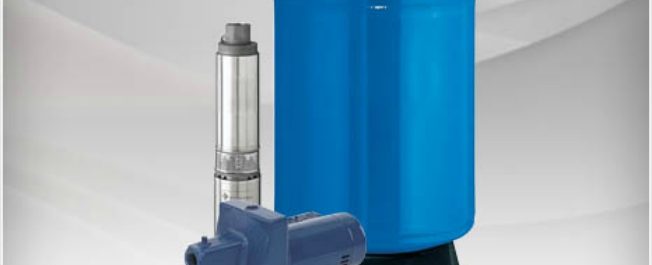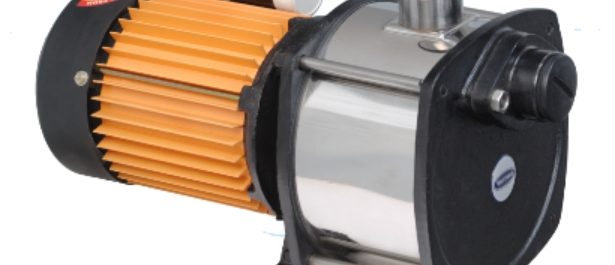Water wells are an essential element of many homes and properties, providing an efficient and reliable source of water for everyday use. However, this crucial resource requires proper maintenance to remain in good working condition. In this article, we’ll discuss the signs that indicate your water well needs repair, the dangers of ignoring these issues, and how you can get your well repaired.
Understanding Water Wells and Their Importance
Water wells are an underground source of water that can be accessed using a pump. This type of water source is often found in rural areas or properties that are not connected to public water systems. They provide clean, fresh water for a variety of uses, from drinking and cooking to irrigating crops and watering livestock.
Water wells have been used for thousands of years, with evidence of wells dating back to the Neolithic period. In fact, wells were often the only source of water for ancient civilizations, providing water for drinking, cooking, and bathing. Today, water wells are still an important source of water for millions of people around the world.
How Water Wells Work
Water wells work by accessing underground reservoirs of water called aquifers. These aquifers are formed when water seeps into the ground and collects in porous rock or soil. A well is drilled or dug deep into the earth until the aquifer is reached. A pump is then installed to pull the water from the well to the surface.
There are two main types of water wells: dug wells and drilled wells. Dug wells are typically shallow and are excavated by hand or with a backhoe. Drilled wells, on the other hand, are deeper and are created using a drilling rig. The type of well that is best for a particular location depends on factors such as the depth of the aquifer and the soil composition.
The Benefits of a Well-Maintained Water Well
A well-maintained water well provides numerous benefits. It provides a reliable source of water, which can be especially important in areas where droughts or other natural disasters can disrupt public water systems. Additionally, using a water well can be cost-effective over time, as there are no monthly water bills to pay.
Furthermore, using a water well can be more environmentally friendly than using public water sources. Public water systems require large amounts of energy to treat and transport water, whereas water from a well requires only the energy used to pump it to the surface. Additionally, using a well can help reduce the amount of water that is taken from rivers, lakes, and other surface water sources, which can help protect these important ecosystems.
In conclusion, water wells are an important source of clean, fresh water for millions of people around the world. By understanding how water wells work and the benefits they provide, we can better appreciate the importance of these underground reservoirs of water.
Common Signs That Your Water Well Needs Repair
Having a well on your property can be a great way to access fresh, clean water. However, like any system, wells can experience problems over time. It’s important to be aware of the signs that your well may need repairs, so that you can address any issues before they become more serious. Here are some common signs to look out for:
Decreased Water Pressure
If you notice a significant decrease in the water pressure in your home, it could be an indicator that there is a problem with your well. This problem can be caused by a variety of issues, including a faulty pump, a blockage in the pipes, or a damaged pressure tank. If you experience a sudden drop in water pressure, it’s important to have your well inspected by a professional as soon as possible.
Dirty or Discolored Water
The water that comes from your well should be clear and clean. If the water appears dirty or is discolored, it could be a sign that there is a problem with the well’s filtration or screening system. The water could be contaminated and should not be consumed until it has been properly tested. In addition to being a potential health hazard, dirty water can also cause damage to your pipes and appliances over time.
Strange Noises from the Well Pump
If you hear unusual noises, such as grinding or whining, coming from your well pump, it could be an indicator of a problem. This noise could be caused by a variety of issues, including a damaged or faulty well pump or clogged pipes. If you notice any unusual sounds coming from your well, it’s important to have it inspected by a professional to determine the cause of the problem.
High Energy Bills
If your energy bills have significantly increased, it could be a sign that your well pump is working harder than it should be due to a blockage or other problem. This increased energy consumption can result from a damaged or faulty pump or issues with the pressure tank. It’s important to address any issues with your well as soon as possible to avoid further damage and higher energy costs.
Frequent Pump Cycling
If your well pump frequently cycles on and off, it could be a sign of an issue with the pressure tank. A damaged pressure tank won’t be able to maintain a consistent pressure, which can cause the pump to work harder than it should and lead to premature wear and tear. This can also result in increased energy costs and a higher risk of pump failure. If you notice frequent pump cycling, it’s important to have your well inspected by a professional.
By being aware of these common signs of well problems, you can take steps to address any issues before they become more serious. If you suspect that your well may need repairs, it’s important to contact a professional well contractor to perform an inspection and make any necessary repairs. With proper maintenance and care, your well can provide you with clean, fresh water for many years to come.
The Dangers of Ignoring Water Well Problems
Water wells are an essential source of clean and safe drinking water for millions of people around the world. However, ignoring water well problems can lead to serious and costly consequences. Below are some potential dangers of ignoring issues with your water well.
Contaminated Drinking Water
If your well becomes contaminated, your drinking water could become unsafe to consume. This contamination can be the result of a variety of issues, including bacteria, chemicals, or pollution. Contaminated water can cause serious health problems, including diarrhea, vomiting, and even death in severe cases. It is essential to have your well water tested regularly to ensure that it is safe to drink.
Contamination of your well water can be caused by a variety of factors. For example, if your well is located near a landfill site or a septic system, it is more likely to become contaminated. Additionally, if you live in an area with high levels of agricultural activity, your well water may be at risk of contamination from pesticides and fertilizers.
Damage to the Well Pump and Other Components
If your well is not maintained, it could lead to damage to the pump or other components. This can cause the pump to fail prematurely, resulting in costly repairs or replacements. Regular maintenance of your well can help to prevent these issues from occurring.
Damage to the well pump can be caused by a variety of factors. For example, if the pump is not properly sized for your well, it may have to work harder than it should, leading to premature failure. Additionally, if your well is not properly sealed, it can become contaminated with dirt and debris, which can cause damage to the pump and other components.
Increased Energy Consumption and Costs
When your well is not working efficiently, it can cause your energy bills to skyrocket. This increased energy consumption will be reflected in your monthly electricity bills, leading to higher costs over time. Regular maintenance of your well can help to ensure that it is working efficiently and can help to reduce your energy consumption and costs.
There are many factors that can contribute to increased energy consumption and costs for your well. For example, if your well pump is not properly sized for your well, it may have to work harder than it should, leading to increased energy consumption. Additionally, if your well is not properly sealed, it can allow air to enter the system, which can cause the pump to work harder than it should.
Potential Health Risks
If your drinking water becomes contaminated, it could result in health risks for you and your family. This can include gastrointestinal issues, skin conditions, and other health problems that can be costly to treat. Regular maintenance of your well can help to prevent these issues from occurring.
There are many potential health risks associated with contaminated well water. For example, if your well water is contaminated with bacteria, it can cause gastrointestinal issues such as diarrhea and vomiting. Additionally, if your well water is contaminated with chemicals, it can cause skin irritation and other health problems.
In conclusion, ignoring water well problems can have serious and costly consequences. Regular maintenance of your well can help to prevent these issues from occurring and can help to ensure that your drinking water is safe and clean.
How to Inspect Your Water Well for Issues
Regularly inspecting your water well is an essential part of keeping it in good working condition. Below are some ways to inspect your water well for issues.
Visual Inspection of the Wellhead
The wellhead is the visible part of the well that is above ground. Regularly inspecting the wellhead for damage or wear and tear is an essential part of maintaining your well. Look for cracks, corrosion, or other signs of damage.
Testing the Water Quality
Regularly testing the quality of your well water is an essential part of ensuring it is safe to drink. You can purchase water testing kits in hardware stores or have a professional come check your water quality.
Checking the Pump and Pressure Tank
Inspecting the pump and pressure tank for signs of damage is also crucial to maintaining your well. Look for signs of leaks or rust and make sure everything is working as intended.
How to Get Your Water Well Repaired
If you notice any issues with your water well, it’s essential to have it repaired as soon as possible. Contacting a licensed and experienced well drilling company is the best way to ensure your well is repaired correctly.
When you contact a well drilling company, they will send a technician to inspect your well and determine the best course of action. Depending on the issue, they may recommend repairs or replacements for the well pump, pressure tank, or other components. They will work with you to determine the best option for your specific needs and budget.
Conclusion
If you notice any signs that your water well needs repair, it’s essential to address the issue promptly. By regularly inspecting and maintaining your well, you can prevent costly repairs and ensure your water is safe to drink. Contact a licensed well drilling company to get your water well repaired today.








